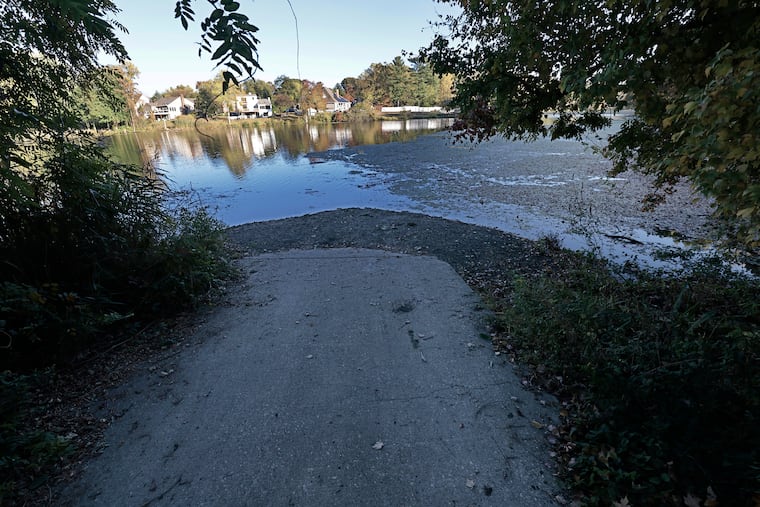What the Delaware River ‘salt line’ is, and why we should care where it is
The salt line on the Delaware is 20 miles north of where it should be this time of year. Should we be worried?

Among all the things that Philadelphians love about the Jersey Shore, the taste of the Atlantic Ocean is not one of them.
Fortunately, the Philadelphia Water Department assures that it’s highly unlikely that its customers ever would have saltwater running through their taps. But in recent weeks the so-called salt line — the boundary between oceanic and freshwater — along the Delaware River has spiked radically northward, the result of an astonishingly dry three months.
As of Monday, the salt line had advanced to a location near Philadelphia International Airport, about 20 miles north of average for this time of year, and about 20 miles south of the Baxter water treatment plant in Torresdale, a source of drinking water for about 60% of the city.
» READ MORE: Delaware River water levels at 60% as salt front increases amid drought
The rains forecast for Wednesday night and Thursday morning throughout the Philly region and in upstate Pennsylvania and northern New Jersey should have at least a mild flushing effect, said David Ondrejik, meteorologist and chief hydrologist at the National Oceanic and Atmospheric Administration’s Middle Atlantic River Forecast Center, which monitors conditions in the Delaware and Susquehanna Basins.
However, they won’t come close to wiping out the deficits, or concerns about the spreading dryness.
Just what is the salt line on the Delaware River?
What is more properly the “salt front” is an elusive, fluctuating border separating freshwater from water that is considered too salty to drink or a danger to certain aquatic life and industrial equipment.
The Delaware River empties into Delaware Bay, a saltwater body directly connected to the Atlantic Ocean.
When rain is scarce, the flow of the Delaware weakens, allowing salt to intrude, and its northern extent is called the salt line. Defining its location at times can be in a league with an existential quandary since it’s constantly on the move. The Delaware River Basin Commission prefers to use weekly averages as locators, as opposed to day-to-day changes.
Is the salt line visible?
No. It is determined by a network of water quality monitoring gages and mathematical calculations, explains basin commission spokesperson Kate Schmidt.
The commission has been tracking it since 1963.
Has the salt line ever been this far north?
Yes, and then some. In November 1964, it got as far as the Benjamin Franklin Bridge. Some of the farthest intrusions on record have occurred in November, since on average the fall is one of the year’s drier periods, said the river forecast center’s Ondrejik.
Why should anyone care about the position of the salt line?
Along with soil moisture and other metrics, it is an important drought indicator.
And in addition to potential impacts on drinking water in Philadelphia, Bucks County, and New Jersey, salt concentrations can corrode factory equipment. Have you noticed what road salt can do to your car body?
During the 1964 drought, which lapsed into 1965, the Scott Paper Co., the erstwhile paper behemoth on the Delaware in Chester, suffered over $4 million in damages in today’s dollars, according to the basin commission.
In 1964, less than half an inch of rain fell in each of May, June, and August, peak water-usage months when the foliage and humans can become especially thirsty.
This time around, said Ondrejik, the region caught a break in that the trees and plants are calling it a season and people aren’t filling swimming pools.
Has the salt line ever reached the Baxter water treatment plant?
The Philadelphia Water Department says that if the salt line reached 1964 levels, it’s possible that “very small increases in chloride” might be evident at the plant, which serves about 60% of the city.
But the department says it sees more significant amounts from melting snow carrying road salt into the Delaware.
And while the salt line has made a robust run at the city, from here the going is about to get harder, said Ondrejik. The Delaware makes a sharp jog eastward at Philadelphia, and the turning process is going to make it harder for the salt line to make progress.
How is the salt line kept at bay?
The basin commission has trump cards to play should the salt line become overly aggressive — releases of freshwater from upstream reservoirs.
That assumes that they won’t be dangerously depleted by drought conditions.
But for now, the water department says, any threat to water supplies would be remote.